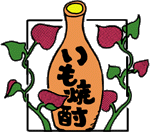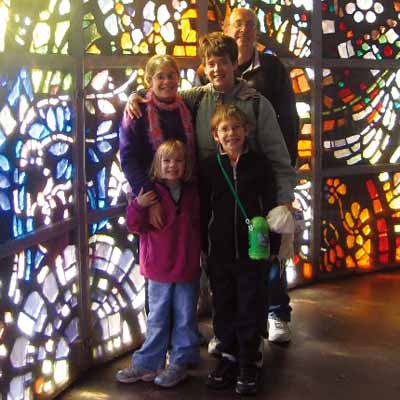Our adventures in Japan and beyond
Daniel J. Scheeres
Associate Professor
The University of Michigan
JAXA/ISAS Visiting Professor
JSPS Fellow
This fall my family and I have had the adventure of a lifetime. While my family has been busy exploring a メnew worldモ called Japan, my adventure has mostly centered on the exploration of another new world called Itokawa. There are many parallels between these adventures. My family and I are discovering the richness of Japanese culture, are learning to think in new ways, and are starting to understand many aspects of Japanese life that used to puzzle us. Working with the Hayabusa science team, I am discovering many new things about Itokawa, learning to think in new ways about asteroids, and puzzling out answers to old questions even as new, more complex questions form.
My wife, Susan, our children Annaka (age 11), Samuel (age 8) and Eleanor (age 5), and I have been taking full advantage of our extended stay in Japan. In addition to our many weekend trips to Tokyo area parks, museums, and districts, weユve also enjoyed several longer trips. These have included a few days at Nikko, a week in Kyoto, a weekend in Hiroshima, and daytrips to Hakone, Kamakura, and Yokohama. We especially liked Kyoto, from the simple beauty and serenity of the temple gardens within Daitoku-ji to the wildness of Fushimi-inari shrineユs breathtaking labyrinth of torii gates. Sampling so many different delicious foods has also been a wonderful part of our Japanese adventure. Our children will continue asking for onigiri, soba, and curry long after we return home!
Our daily life in Sagamihara has also been an adventure. Perhaps the biggest challenge has been learning to carry several bags of groceries along with our youngest on a bike without running into a light post! The ISAS lodge has been a very comfortable place for us, and its beautiful setting has been a welcome place to come home to. The ISAS staff has helped us in so many ways, explaining daily life and routines. In particular, Ms. Kazuko Sugita has gone out of her way to ease our transition to a new country. The guards at the front gate have been especially kind to our children, giving them many small gifts and always being cheerful and friendly to them. We are very appreciative to all of the people we have met.
Living in Japan has been professionally rewarding as well. Working at ISAS has provided me with a birdユs eye view of the most amazing celestial object I have ever seen - the asteroid Itokawa. Being here as a member of the Hayabusa Joint Science Team is truly a highpoint of my career. The devotion and skill of the science and engineering teams has been inspiring to see, and the high level of discussion and analysis within the teams has taught me many important scientific points. I am especially thankful for the support of the Japan Society for the Promotion of Science and my host at ISAS, Professor Junユichiro Kawaguchi.
The results of this mission will leave two lasting legacies. First, the Hayabusa engineering team is showing the world how to carry out the extremely delicate and risky operations while hovering over a body just over twice the size of the skyscrapers in Shinjuku. All future missions to asteroids will start with Hayabusa, and its efficient and innovative spacecraft design. Second, the Hayabusa mission is changing our basic scientific understanding of asteroids, how they form, and how they evolve. Hayabusa and its science team will broaden our understanding of asteroids, and will keep researchers busy for many years trying to reconcile their theories with what has been found at Itokawa.
Finally, I would like to make a few observations on the scientific and engineering culture at ISAS, drawing on my past experience as an employee of the Jet Propulsion Lab for five years and my interactions with many other space research labs and companies. The culture at ISAS is truly unique among space science research centers due to their emphasis on cross training and testing. One of the most exciting aspects of work at ISAS is the expectation that everyone is involved with operations and hardware development. This is certainly not the case in the U.S. space program, which has become so specialized that it is very rare for an engineer or scientist to specialize in more than one area of technical competence and capability. This emphasis on multi-disciplinary training can have tremendous benefits in the design and development of innovative spacecraft and space missions, as clever and efficient designs come from people who have an intimate knowledge of the detailed systems that they work with. I look forward to many more interactions with ISAS, the people who work here, and the space missions they design.


